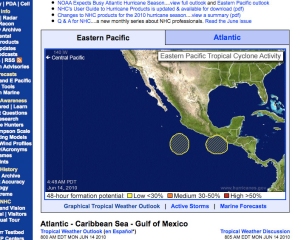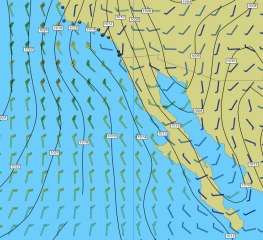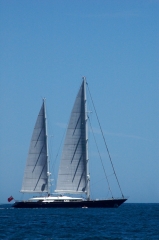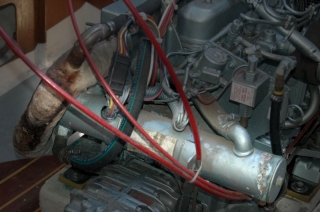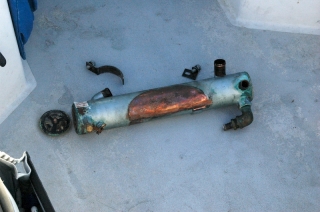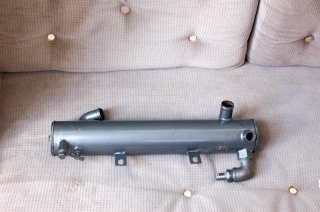Jun 18 2010
Bahia Magdelena to Bahia Santa Maria: The shortest leg of the trip
After the longest leg of the trip, it was great to have the shortest leg of the trip. Today, I sailed from Bahia Magdelena to Bahia Santa Maria–a mere 20Nm and from anchorage to anchorage about 4 hours.
But, let’s back up a bit. Around 4am, I heard a bird land on the mast. Typically, I would run up on deck to scare whatever bird it was away because I hate to clean up their droppings . . . but, last night, I was exhausted and had finally found peace with it. A tired bird looking for a place to rest is not a big deal–a few swabs of the mop in the morning, and all is well. I heard him sitting up there all night . . . or, so I thought.
When I awoke this morning, and was doing my morning survey of the boat, I saw all of the appropriate droppings on the deck. But, when I looked up, I saw a dead pelican hanging limply with his broken wing caught in the middle spreader–about 30 feet above ground.
I am not sure if he tried to fly between the shrouds and the mast and hit his wing, or if he was resting up there and got it caught at some point during the night. But, he was certainly stuck–it took me a while to get him down and set him afloat in the bay. I know that all things of this earth must return to the earth at some point, but that was the saddest thing I have seen my entire trip.
After that, I tried to piece together my morning. Sat and thought for a short time, made something to eat and some coffee, and then took another short rest.
About 10am, I raised the anchor and motored towards the mouth of the bay. Once outside, the winds blew a steady 20 knots all day, and the seas were a lumpy 2-meters high with a pretty fast interval. It was a short 3.5 hours to Bahia Santa Maria, and I arrived to an empty harbor (other than a couple of trawlers anchored out towards the ocean off Punto Hughes).
I set the anchor in this familiar bay (we stayed here for three days on the way down with the Baja Haha), made some food, and off to sleep. If the winds die tonight like they are supposed to, I will depart for the 95Nm leg to Bahia San Juanico at either 11pm or 3am–depending upon the weather. It will take about 15 hours and I need to arrive at the anchorage during daylight hours . . . .
Location:
24°46.000′ N
112°15.428′ W
